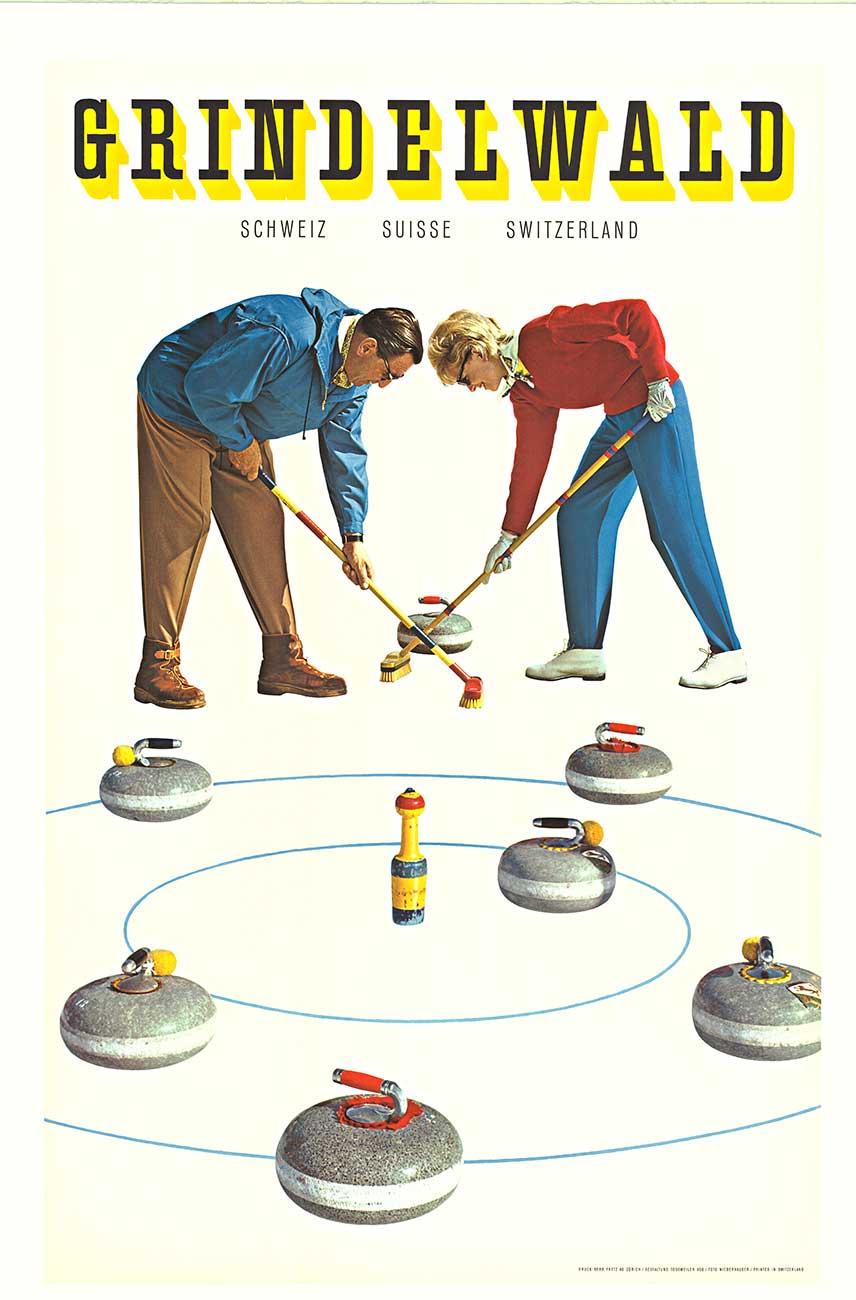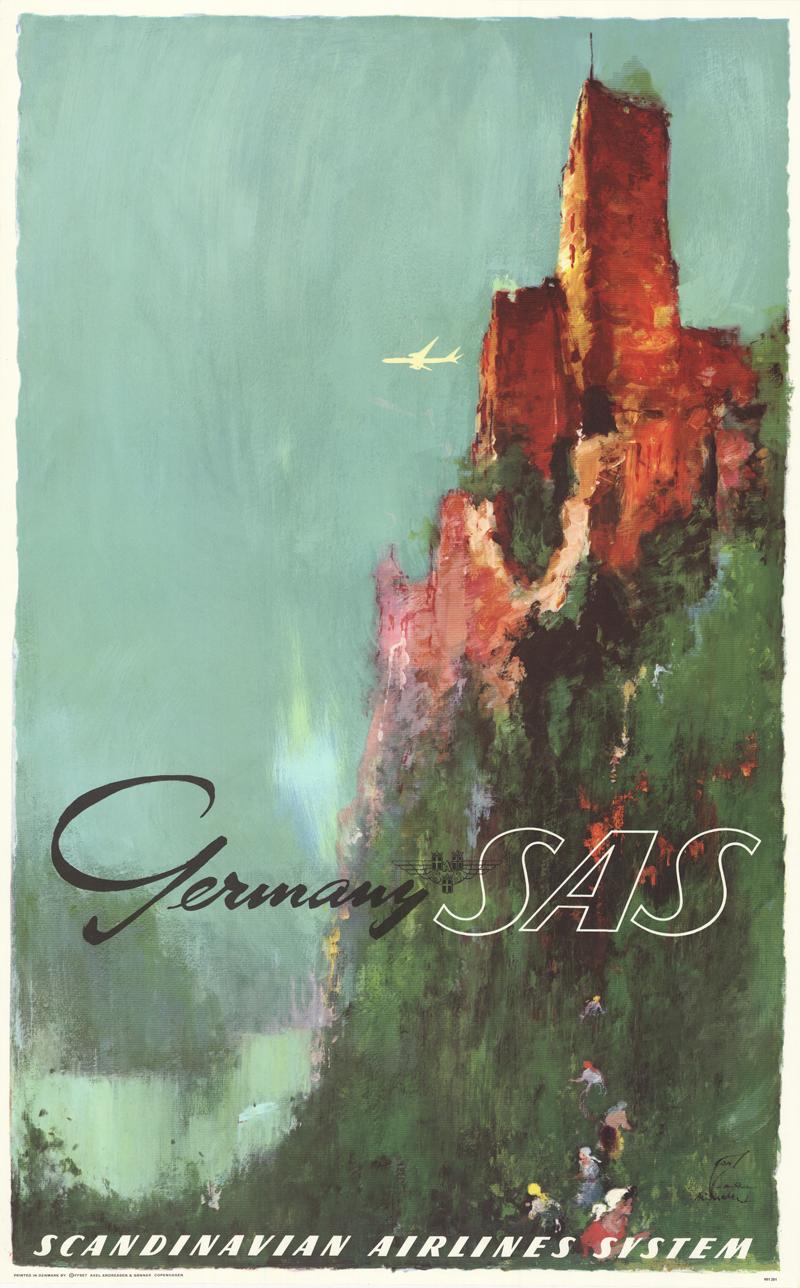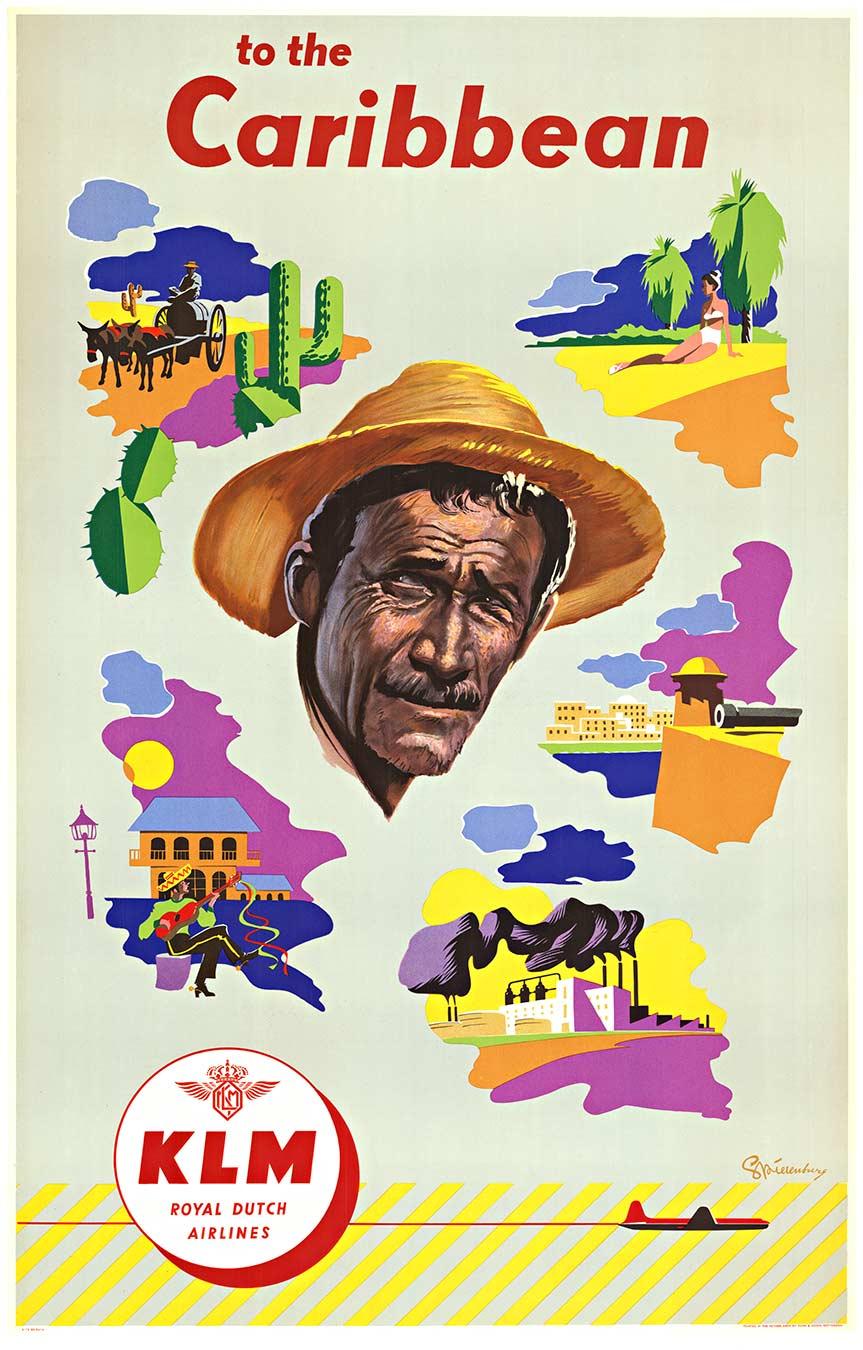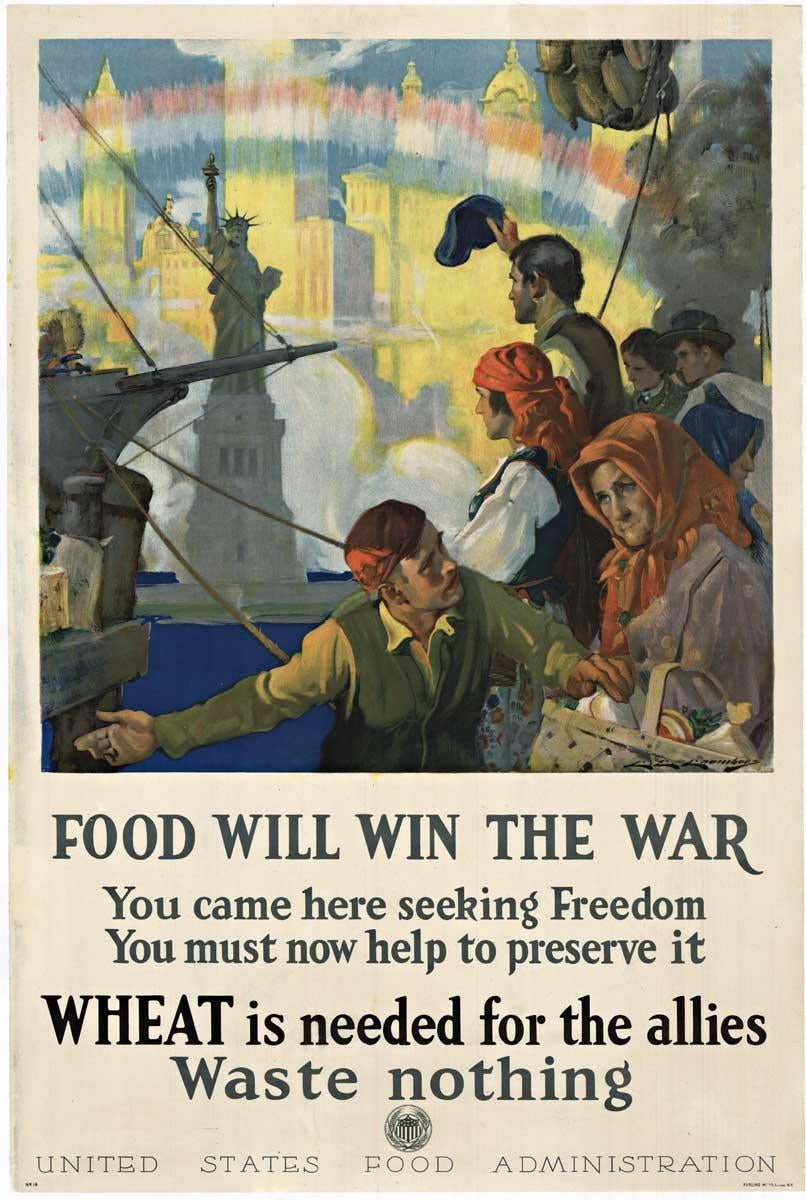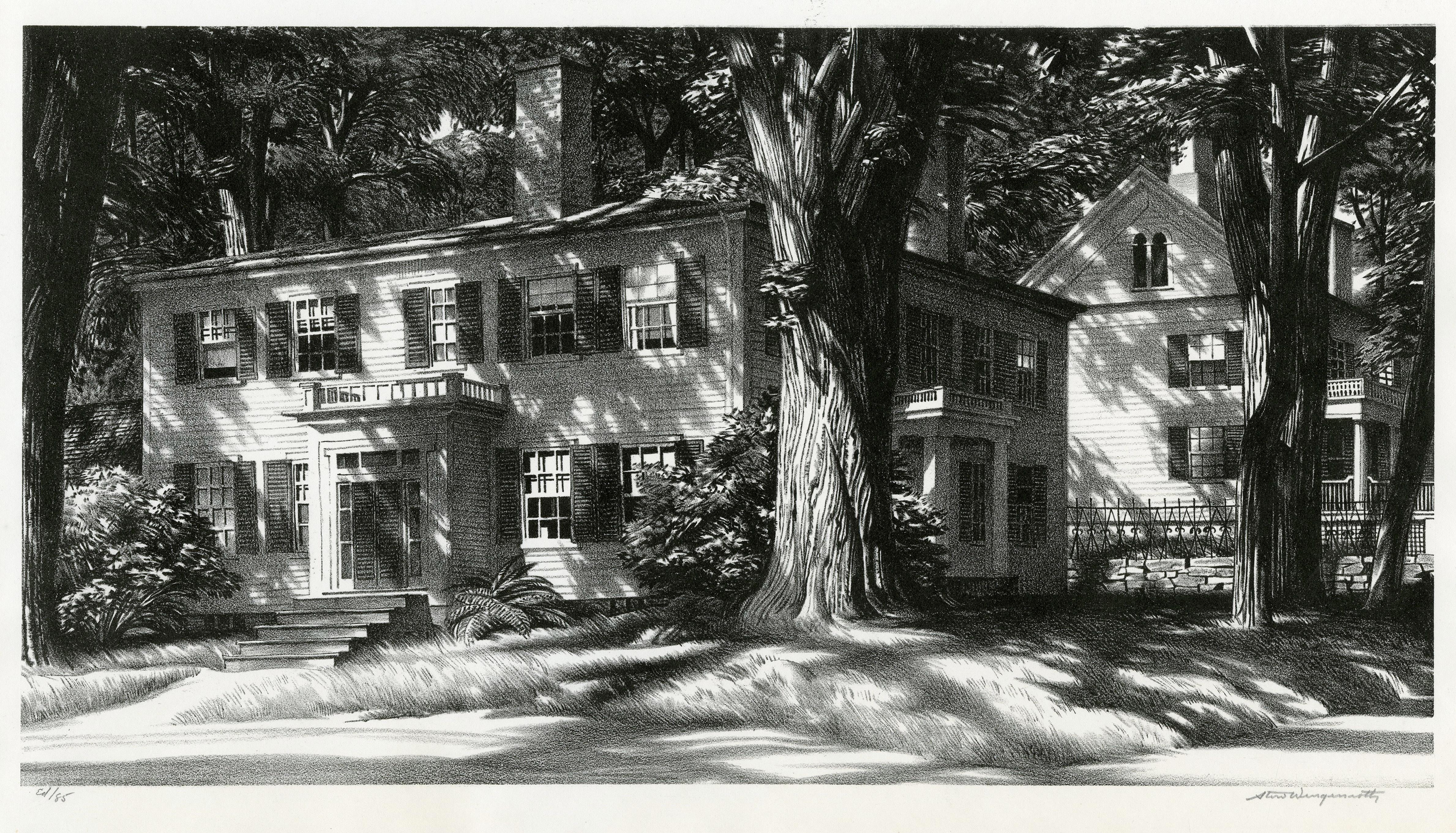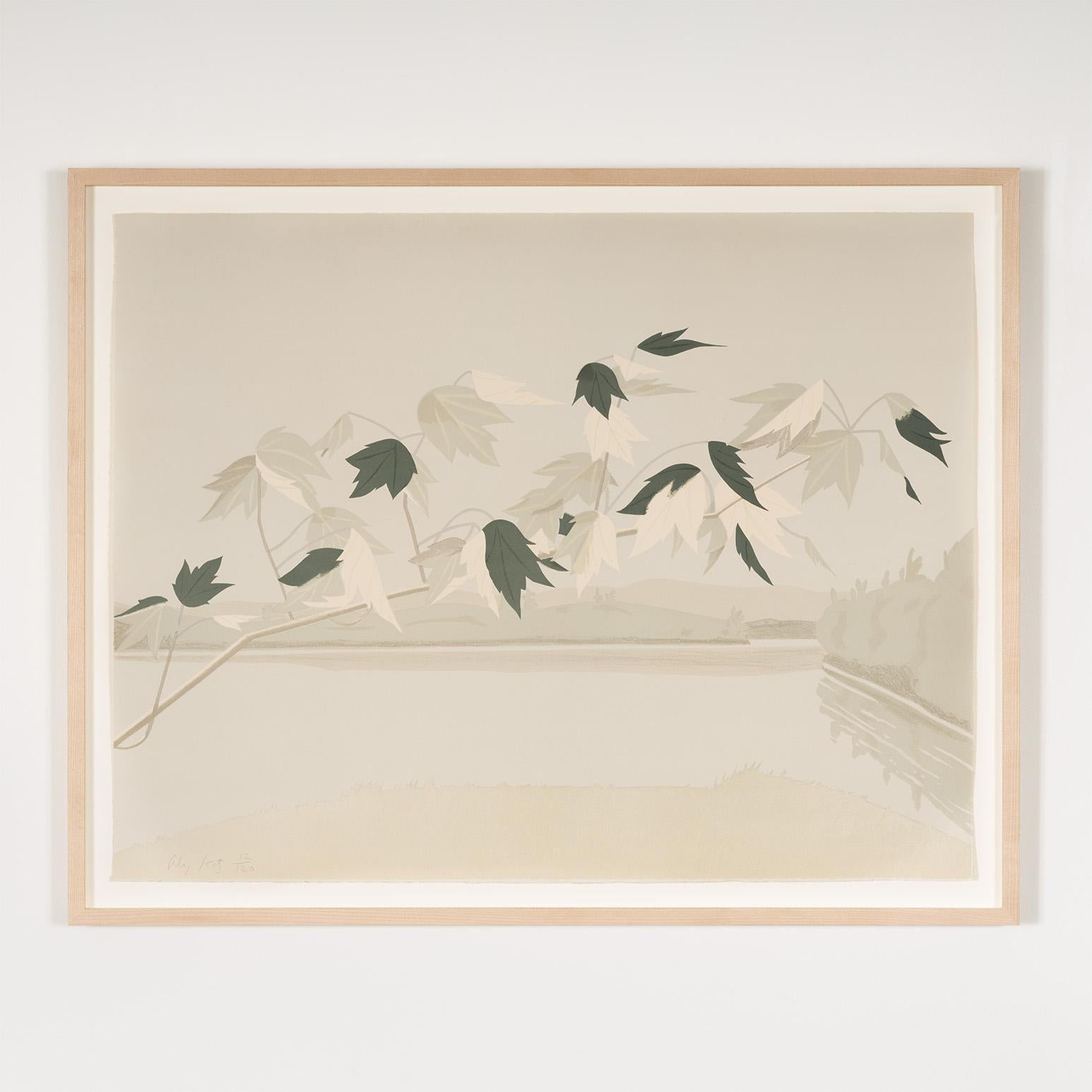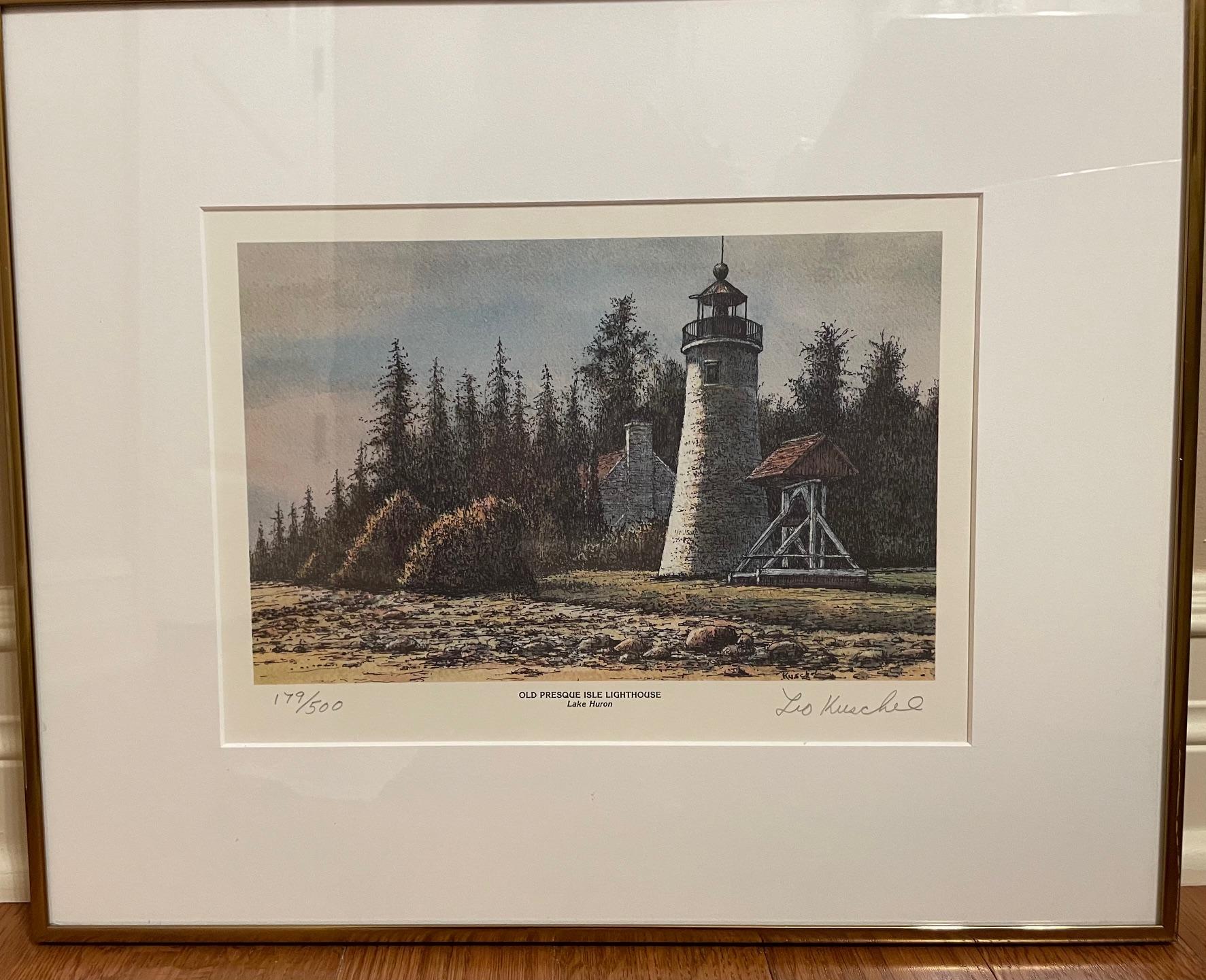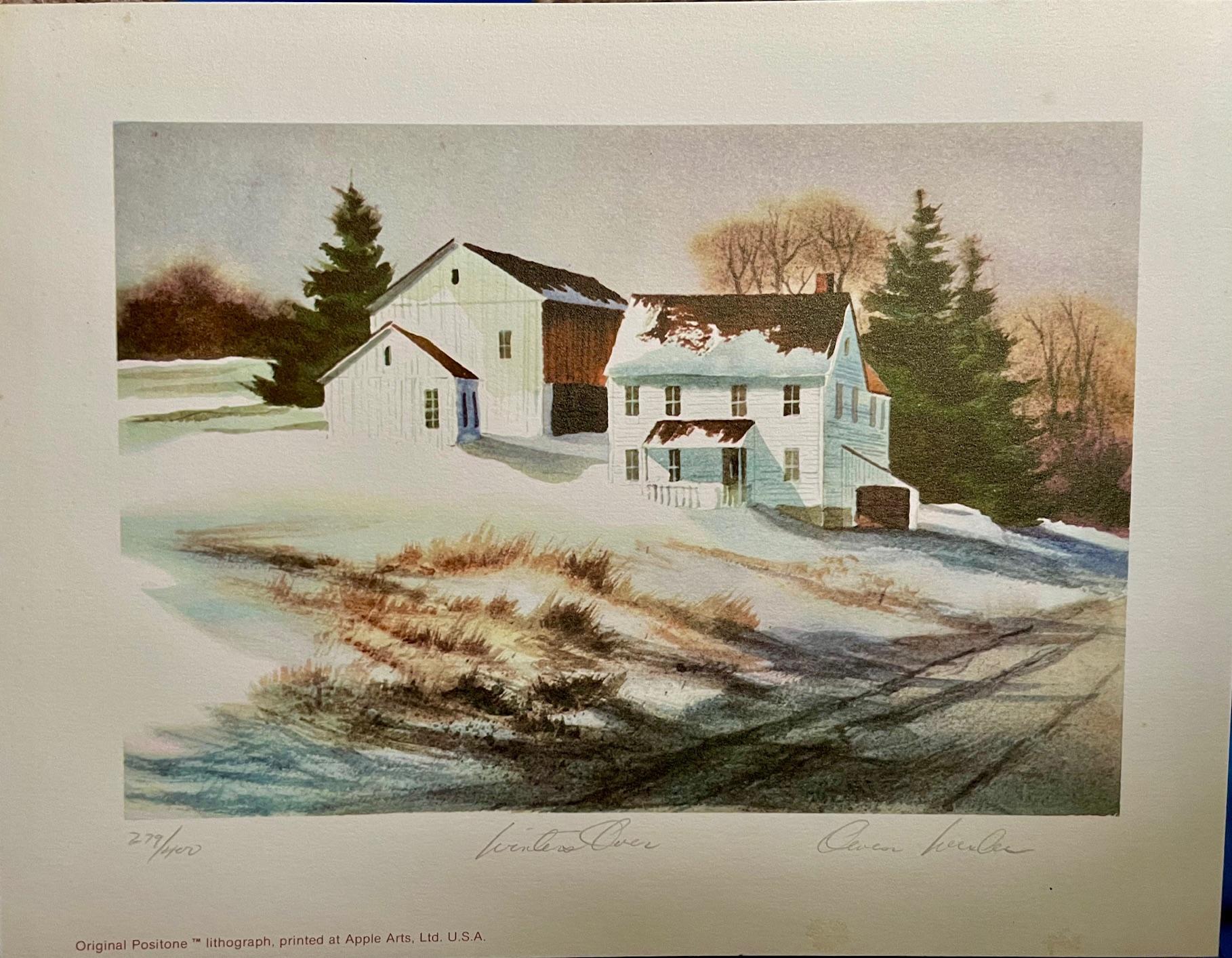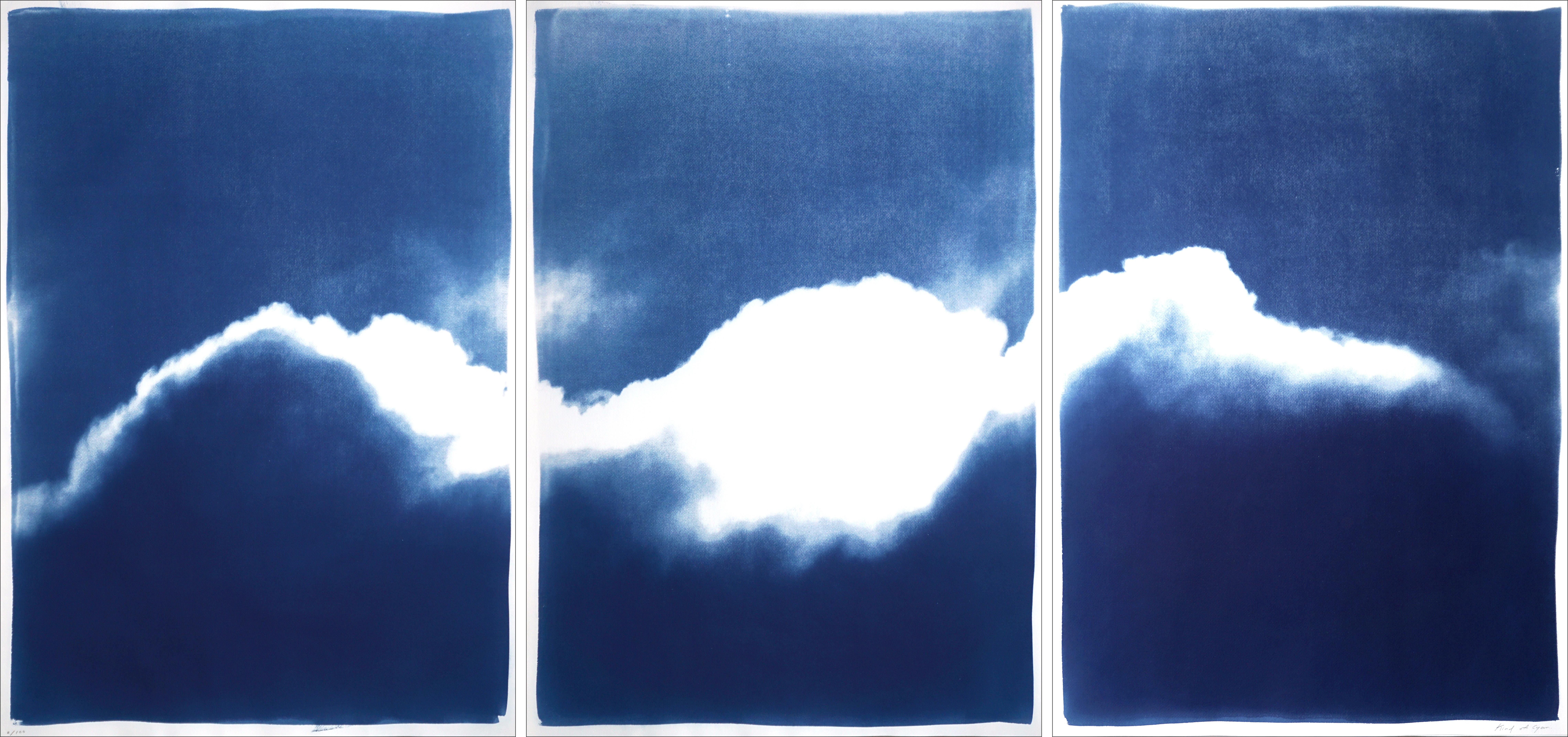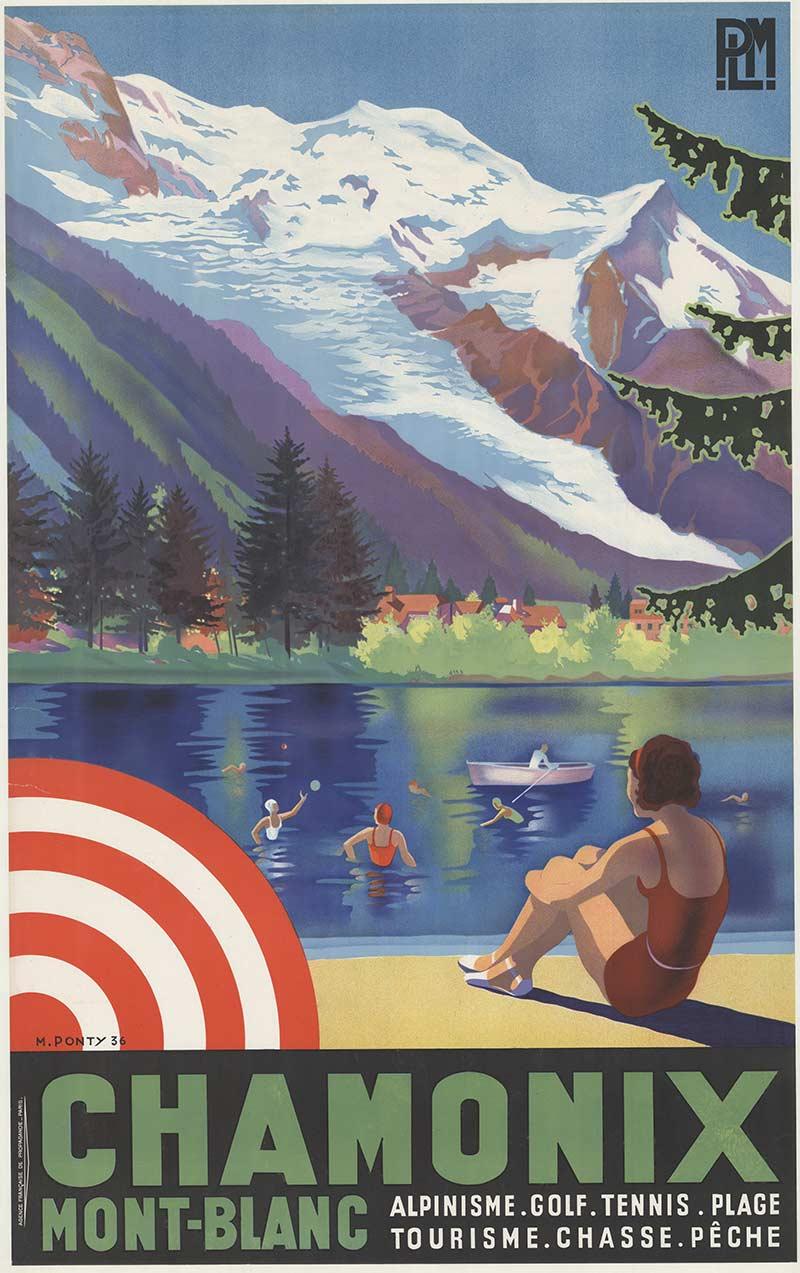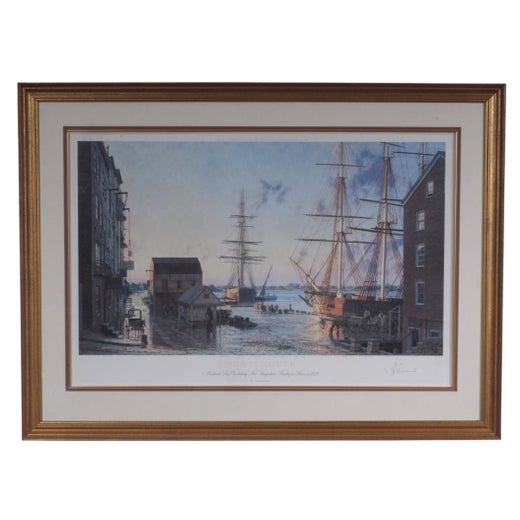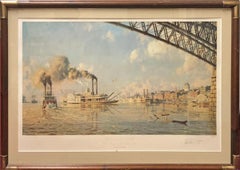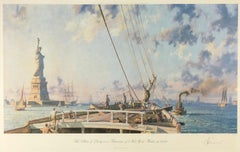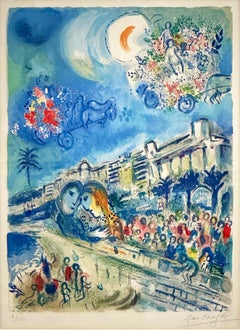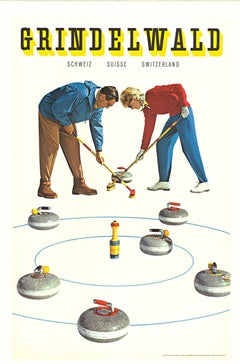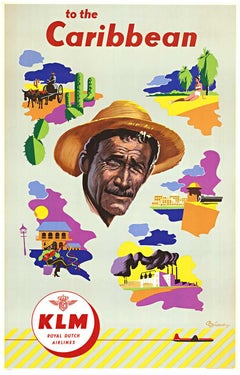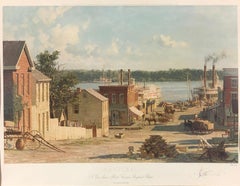
Hannibal - View from Mark Twain's Boyhood Home
View Similar Items
Want more images or videos?
Request additional images or videos from the seller
1 of 6
John StobartHannibal - View from Mark Twain's Boyhood Home
Price:$950
$1,250List Price
About the Item
- Creator:John Stobart (1929, British)
- Dimensions:Height: 32 in (81.28 cm)Width: 37.5 in (95.25 cm)Depth: 1 in (2.54 cm)
- Medium:
- Movement & Style:
- Period:
- Condition:
- Gallery Location:Missouri, MO
- Reference Number:1stDibs: LU74733196901
John Stobart
John Stobart was a British maritime artist known for his paintings of American harbor scenes during the Golden Age of Sail. His fascination with the sea stemmed from childhood visits to his grandmother in Liverpool where he observed the city's busy docks. After graduation, he travelled to Africa with his father and made sketches of the 12 ports he visited there, inspiring him to pursue maritime art as a specialty. Stobart emigrated to Canada in 1957 where his paintings sold well to the various shipping companies on the St. Lawrence River. In 1965 he made his first visit to the U.S. and was offered a show at the Kennedy Galleries. Later, he established the Stobart Foundation to encourage traditional artists through scholarships. He moved in 2015 to Fort Lauderdale, Florida which is where he died in 2023 at the age of 93.
About the Seller
5.0
Vetted Professional Seller
Every seller passes strict standards for authenticity and reliability
Established in 1970
1stDibs seller since 2017
155 sales on 1stDibs
Typical response time: 1 to 2 days
Authenticity Guarantee
In the unlikely event there’s an issue with an item’s authenticity, contact us within 1 year for a full refund. DetailsMoney-Back Guarantee
If your item is not as described, is damaged in transit, or does not arrive, contact us within 7 days for a full refund. Details24-Hour Cancellation
You have a 24-hour grace period in which to reconsider your purchase, with no questions asked.Vetted Professional Sellers
Our world-class sellers must adhere to strict standards for service and quality, maintaining the integrity of our listings.Price-Match Guarantee
If you find that a seller listed the same item for a lower price elsewhere, we’ll match it.Trusted Global Delivery
Our best-in-class carrier network provides specialized shipping options worldwide, including custom delivery.More From This Seller
View AllSt. Louis, Gateway to the West
By John Stobart
Located in Missouri, MO
John Stobart
"St. Louis, Gateway to the West"
Color Lithograph
30 x 42 inches framed
Signed in Pencil and Numbered 434/750
Category
1970s American Realist Landscape Prints
Materials
Lithograph
The Statue of Liberty in a Panorama of New York City in 1886
By John Stobart
Located in Missouri, MO
John Stobart
"The Statue of Liberty in a Panorama of New York City in 1886"
Color Lithograph
approx 32 x 43 inches framed
Signed in Pencil and Numbered 914/950
A marine painter of ...
Category
1970s American Realist Landscape Prints
Materials
Lithograph
A View of St. Louis
By John Stobart
Located in Missouri, MO
John Stobart
"St. Louis, A View Through the Arches of the Eads Bridge" 1979
Color Lithograph
32.5 x 37.5 inches framed
Signed in Pencil and Numbered 221/75...
Category
1970s American Realist Landscape Prints
Materials
Lithograph
Bataille de Fleurs (Carnaval of Flowers) from Nice and the Côte d’Azur
By Marc Chagall
Located in Missouri, MO
After Marc Chagall (1887 - 1985)
By Charles Sorlier (French, 1921-1990)
"Bataille de Fleurs (Carnaval of Flowers)" (from Nice and the Côte d’Azur), 1967
Reference: CS 33
Color Lithograph
Image Size: 24 7/16 in x 18 in (62 cm x 45.8 cm)
Sheet Size: 29 9/16 in x 20 11/16 in (75 x 52.5 cm)
Framed Size: approx. 34 x 27 inches
Edition: Numbered 1 of 150 in pencil in the lower left margin and printed on Arches wove paper (aside from an edition of 75 signed and numbered in Roman numerals and 10 artist's proofs).
Signature: This work is hand signed by Marc Chagall (Vitebsk, 1887 - Saint-Paul, 1985) in pencil in the lower right margin.
Marc Chagall was a man of keen intelligence, a shrewd observer of the contemporary scene, with a great sympathy for human suffering. He was born on July 7, 1887 in Vitebsk, Russia; his original name was Moishe Shagal (Segal), but when he became a foremost member of the Ecole de Paris, he adopted French citizenship and the French spelling of his name. Vitebsk was a good-sized Russian town of over 60,000, not a shtetl. His father supported a wife and eight children as a worker in a herring-pickling plant.
Sheltered by the Jewish commandment against graven images, the young Chagall never saw so much as a drawing until, one day, he watched a schoolmate copying a magazine illustration. He was ridiculed for his astonishment, but he began copying and improvising from magazines. Both Chagall's parents reluctantly agreed to let him study with Yehuda Pen, a Jewish artist in Vitebsk. Later, in 1906, they allowed their son to study in St. Petersburg, where he was exposed to Russian Iconography and folk art. At that time, Jews could leave the Pale only for business and employment and were required to carry a permit. Chagall, who was in St. Petersburg without a permit, was imprisoned briefly.
His first wife, Bella Rosenfeld, was a product of a rich cultivated and intellectual group of Jews in Vitebsk. Chagall was made commissar for the arts for the area, charged with directing its cultural life and establishing an art school. Russian folklore, peasant life and landscapes persisted in his work all his life. In 1910 a rich patron, a lawyer named Vinaver, staked him to a crucial trip to Paris, where young artists were revolutionizing art. He also sent him a handsome allowance of 125 francs (in those days about $24) each month. Chagall rejected cubism, fauvism and futurism, but remained in Paris. He found a studio near Montparnasse in a famous twelve-sided wooden structure divided into wedge-shaped rooms. Chaim Soutine, a fellow Russian Jew...
Category
1960s Modern Figurative Prints
Materials
Lithograph
The 18th at Pebble Beach
By LeRoy Neiman
Located in Missouri, MO
The 18th at Pebble Beach
Leroy Neiman (American, 1921-2012)
Signed in pencil lower right
Edition 176/400 lower left
26 x 43 inches
37.25 x 54.5 inches with frame
Known for his bright, colorful paintings and screen prints of famous sports stars...
Category
20th Century American Modern Landscape Prints
Materials
Color, Lithograph
Price Upon Request
Cove at Vintage
By LeRoy Neiman
Located in Missouri, MO
Cove at Vintage
Leroy Neiman (American, 1921-2012)
Signed in pencil lower right
Edition 237/375 lower left
34 x 36.5 inches
43 x 45.5 inches with frame
Known for his bright, colorful paintings and screen prints of famous sports stars...
Category
20th Century American Modern Landscape Prints
Materials
Color, Lithograph
Price Upon Request
You May Also Like
Original Grindelwald Switzerland vintage curling winter sports poster
Located in Spokane, WA
Original vintage poster: GRINDELWALD SUISSE; vintage Swiss winter sporting poster created by Karl Toggweiler. Size 25.5" x 40"; c. 1960. Original lithograph. This Swiss curlin...
Category
1960s American Realist Figurative Prints
Materials
Lithograph
$1,518 Sale Price
20% Off
Going Home, Modern Black and White Lithograph by Georges Schreiber
By Georges Schreiber
Located in Long Island City, NY
Artist: Georges Schreiber, Belgian/American (1904 - 1977)
Title: Going Home
Year: circa 1945
Medium: Lithograph, signed and titled in pencil
Image Size: 9.25 x 13.25 inches
Size: 12 ...
Category
1940s American Realist Landscape Prints
Materials
Lithograph
Germany by SAS, Scandinavian Airlines System original vintage travel poster
Located in Spokane, WA
Original vintage travel poster: Germany by SAS (Scandinavian Airline System). Artist: Otto Nielsen. Size: 25 x 39.5" Archival linen backed original vintage travel poster; ex...
Category
1960s American Realist Landscape Prints
Materials
Lithograph
Original KLM to the Caribbean midcentury vintage travel poster
Located in Spokane, WA
Original KLM to the Caribbean midcentury modern vintage travel poster. Archival linen backed in excellent, Grade A condition, ready to frame. Note that the background color is a light blue-grey. Vibrant and clean. Printed by Kuhn & Zoon, Rotterdam. KLM Royal Dutch Airlines.
Capture the allure of mid-century travel with this stunning original vintage KLM Royal Dutch Airlines poster titled "To the Caribbean." This poster features vibrant illustrations and bold imagery designed to inspire wanderlust among travelers. The centerpiece is a captivating portrait of a man in a straw hat, symbolizing the culture and warmth of the Caribbean. Surrounding him are colorful depictions of local architecture, lively festivities, tropical plants, and scenic elements—all rendered in an artistic, postwar illustrative style.
The poster's overall design and artistic style evoke a sense of adventure, exoticism, and the allure of tropical vacation destinations. The bold text "to the Caribbean" and the prominent KLM logo at the bottom indicate that this was an advertisement for KLM's air travel services to the Caribbean region.
This original vintage KLM poster...
Category
1960s American Realist Portrait Prints
Materials
Lithograph
Original "Food Will Win The War" vintage World War 1 poster
By Charles E. Chambers
Located in Spokane, WA
Original World War 1 vintage poster: Food Will Wn the War. Arhival linen backed. PRINTER: Rusling Wood Litho., New York Bright and in good condition. There is some marks down the left side of the poster, possible ink from when the poster was printed.
This poster calls on immigrants to do their part in the war effort. It depicts recent immigrants standing near a sailing ship with the Statue of Liberty and a rainbow stretched across the New York City skyline in the background. The text reads:
You came here seeking Freedom.
You must now help preserve it.
Wheat is needed by the allies.
Waste nothing.
The generosity and compassion of the American people and the great agricultural resources of the North American continent would be called upon... Twenty million Americans signed pledges of membership in the Food Administration...
Category
1910s American Realist Figurative Prints
Materials
Lithograph
Summer Shadows, Wiscasset, Maine
By Stow Wengenroth
Located in Fairlawn, OH
Summer Shadows, Wiscasset, Maine
Lithograph, 1947
Signed in pencil lower right (see photo)
"Ed. 85" lower left corner (see photo)
Edition: 85
Wiscasset, known as the "prettiest villa...
Category
1940s American Realist Landscape Prints
Materials
Lithograph
Recently Viewed
View AllMore Ways To Browse
Painting Of Roman Emperors
Sculpture Of Woman Lying
The Jungle Book
Vintage Beach Umbrella
Andy Warhol Jackie
Arizona Mirror
Bronze Sculpture Rabbit
Claude Bernard
Cole Of California
Male Nude Sculptures
Painting Of Bourbon
Rachel Green
Sculpture Teddy Bear
Valente Painting
Vintage Swim
Artist Russell Wood
Cannes Watercolour
King Charles Watercolour
